Travel: Looking for a historic city break and a trip to the beach? Try glorious Gdansk
and live on Freeview channel 276
It was here the shooting started in September 1939 and 42 years later the city was the birthplace of Solidarnosc, the trade union movement, which spelled the beginning of the end for Soviet-style communism.
But the Pomeranian capital has a pedigree that long pre-dates these epoch-making events of the 20th century.
Advertisement
Hide AdAdvertisement
Hide AdGdansk was the largest and most important city in Poland during its heyday as a Hansa port from the 1300s and at the time of the Rzeczpospolita (Republic of Poland) from the 16th to the 18th century.
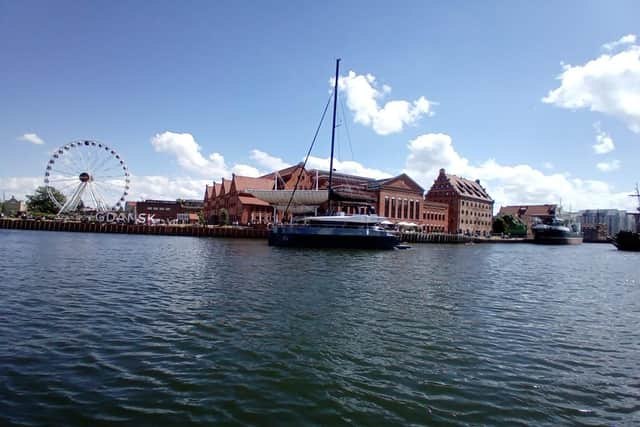

Little more than two hours from Belfast, it’s a perfect destination for weekend breakers.
This writer left Derry at 1pm of a Thursday afternoon and sat down to a fine supper of herring, pierogi (dumplings) and duck in Kubicki, Gdansk’s oldest restaurant on the Wartka by 8.30pm (7.30pm Irish time).
Base camp was the ARCHE Dwór Uphagena. The stylish hotel is in St. Mary's Hospital, an historic 19th century building in the Lower Town, a thriving post-industrial district of former factories that has been revitalised by artists, creatives, brewers and new businesses.
Advertisement
Hide AdAdvertisement
Hide AdJust around the corner are a series of historic bastions and fortifications that bound the southern fringes of Gdansk city centre.
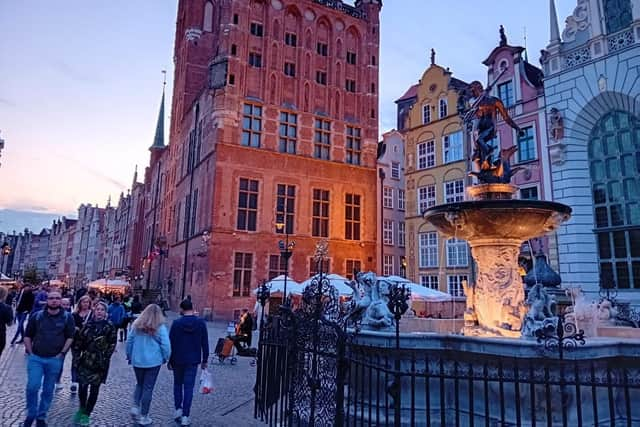

The Old Town is only ten minutes away on foot. This was our first port of call with our expert tour guide Bożena, from Poland By Locals.
Entering the Old Town by way of the 16th century Brama Zielona (Green Gate), one of a series of medieval gates along the historic Long Embankment (Dlugie Pobrzeze) on the Motlawa river, we filed into the Dlugi Targ (Long Market Square) and Ulica Dluga (Long Lane).
We were greeted by the sights of Gdansk Town Hall, The Golden House, Neptune’s Fountain and the Artus Court.
Advertisement
Hide AdAdvertisement
Hide Ad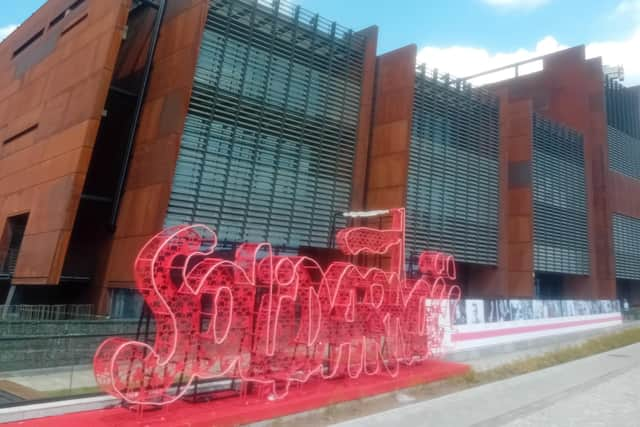

During Gdansk’s days as a thriving Hansa port this central thoroughfare was known as the Royal Route.
Ten minutes along the Long Lane we arrived at the Zlota Brama (Golden Gate) and the medieval Prison Tower.
Much of the Old Town was built in the Dutch mannerist style in the 16th century. While many buildings were pulverised during the Second World War the district has been painstakingly restored and looks resplendent today.
One building that survived the bombardment of WWII unscathed is the towering St. Mary’s Basilica, a 14th century Gothic masterpiece which is one of the largest brick-built churches in the word.
Advertisement
Hide AdAdvertisement
Hide Ad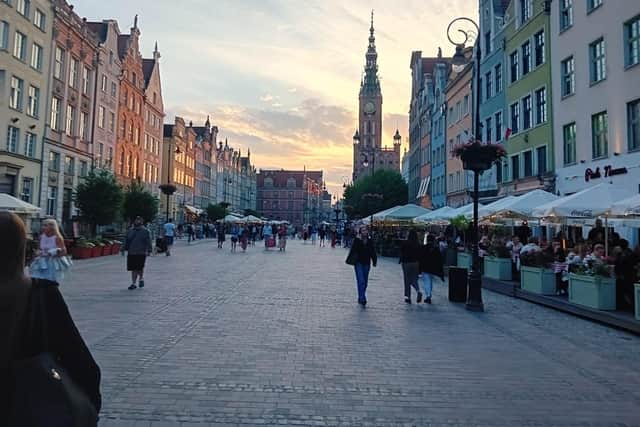

If you have a head for heights it is worth climbing the 400 steps to the top of the clock tower. The views are magnificent.
St. Mary’s is located at the top of Beer Street (Ulica Piwna), an ideal spot to stop for refreshments. The name is a nod to the acclaimed astronomer Johannes Hevelius, the father of lunar topography, who has a crater on the moon named after him.
When he wasn’t naming the heavens Johannes was also a brewer and made the ‘Jopen’ beer variety in the heart of the city. The charming thoroughfare was formerly called Jopen Street (Ulica Jopejska) but became Beer Street in the 1940s.
After exploring the Old Town we strolled along the Long Embankment past the distinctive Krantor crane (Brama Żuraw), the largest medieval pulley crane in Europe.
Advertisement
Hide AdAdvertisement
Hide AdFrom here we jumped aboard the Black Pearl and sailed up the Motlawa towards the Baltic.
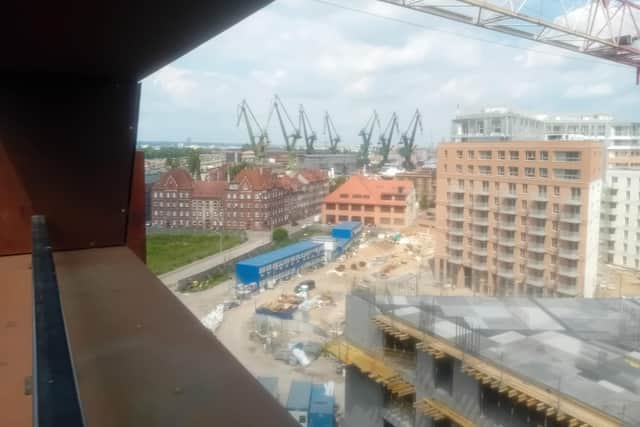

As we sailed north Bożena pointed out the Westerplatte peninsula on our right-hand side.
In the early hours of September 1, 1939, German forces aboard the Schleswig-Holstein attacked Westeplatte’s small Polish garrison.
The operation was part of Hitler’s attempt to seize the ‘Free City of Danzig’, which was a majority-German city at the time due to the legacy of the partition of Poland and Prussian rule from the late 1700s.
Advertisement
Hide AdAdvertisement
Hide AdThe Battle of Westerplatte was marked by the brave resistance of its Polish defenders. Today it is remembered as a symbol of Poland’s long struggle for independence.
Gdansk remains a busy working port and t was evident as we sailed back up the Motlawa that it’s a city proud of its industrial heritage.
This is memorialised in the magnificent European Solidarity Centre, in the Gdansk shipyard, which brings to life the legacy of the Solidarnosc trade union and political movement of the 1980s.
The museum attests to the bravery of the former Lenin shipyard workers who stood up to the increasingly authoritarian Moscow-aligned regime of the 1970s and 1980s.
Advertisement
Hide AdAdvertisement
Hide AdA period crane cab among the exhibits pays tribute to the late crane driver Anna Walentynowicz, whose firing in August 1980 helped spark the mass movement for free trade unions, political rights and elections.
Lech Wałęsa, the former electrician and Nobel Peace Prize winner, who became Solidarnosc’s figurehead, still has an office in the building but we didn’t spot him during our time there.
Bożena told us citizens were so proud of this aspect of their history that they fought to maintain the shipyard’s iconic cranes as a monument to Solidarnosc and the city’s shipbuilding past.
Poland is perhaps best-known as a city break destination, yet the Tricity (Trójmiasto) region, comprising Gdansk, Sopot and Gdynia, is unique in that it offers visitors the chance to enjoy a Polish beach holiday at the same time.
Advertisement
Hide AdAdvertisement
Hide AdMiles and miles of sandy beaches run north from the city along the Gulf of Gdansk as far as its sister city of Gdynia.
The historic spa-town of Sopot, famous for its health-giving saltwater springs, boasts one of the longest wooden piers in Europe.
Here and the beautiful village of Orłowo nearby, are perfect spot for indulging in a bit of salt water therapy. Jumping in for a dip to cool down we found the Baltic wasn’t ‘Baltic!’ after all. The water temperature in June, in fact, was warmer than the seas off Derry and Donegal.
At Sopot we stopped for lunch in Rafał Koziorzemski's award-winning Fisherman restaurant and enjoyed delicious dishes of trout in whitened fish broth and seabass with cucumber salad, fish demi-glace sauce and parsley root puree.
Advertisement
Hide AdAdvertisement
Hide AdFarther to the north is the more modern city of Gdynia, a former fishing village that was developed into a major city and seaport under the Józef Piłsudski government from the 1920s following Poland’s declaration of independence.
Gdynia is thoroughly modern and was, they say, created from ‘the sea and dreams’ of the post-war generation of Poles.
A visit to its Emigration Museum is a must. We were struck by the similarities in the stories of the Irish and Polish diasporas.
Reading of a peasant family who left Galicia in Eastern Poland to emigrate from Gdynia in the 1800s we were reminded of nothing so much as the families who left West Donegal behind them at Droichead na nDeor (The Bridge of Tears) below Muckish before heading in to Derry to set sail for America. Even the photographs were redolent of rural Ireland in the 19th century.
Advertisement
Hide AdAdvertisement
Hide AdA culinary highlight of our stay was a marvellous beef tartare and dry aged Polish and USA Prime Black Angus rib eye steak at Butchery & Wine in Gdynia, a stylish new restaurant specialising in the best local and seasonal produce available.
A traditional żurek (a sour rye soup with sausage, egg and mushrooms served in a bread loaf) at Brovarnia Gdánsk, back in Gdansk was another delight.
So was the baltic herring with sour cream, pickled cucumber and French mustard and the cod fillet, fried baby cabbage with dill, potato puree and roasted onion sauce that we dined on at Maniera Restaurant on Granary Island in the heart of the city.
While we are on the subject of food, a trip to Poland would not be complete without sampling the ultimate Polish street food, Zapiekanki, a kind of basic pizza invented during the communist era and still popular today. They are available from kiosks and shops throughout the Tricity area and are delicious.
Advertisement
Hide AdAdvertisement
Hide AdTravellers on a budget might also avail of the milk bars (Bar Mleczny) dotted throughout the city. These cheap and cheerful cafeterias offer very reasonably priced Polish staples and are popular with locals. There is of course an endless choice of global cuisine in this thriving modern city.
This writer spent three days exploring the Tricity area and is already planning his next visit.
Ryanair flies direct from Belfast International to Gdansk on Tuesdays, Thursdays and Sundays.
Rooms at the Dwór Uphagena are currently retailing at less than £100 for two adults when booked in advance.
Comment Guidelines
National World encourages reader discussion on our stories. User feedback, insights and back-and-forth exchanges add a rich layer of context to reporting. Please review our Community Guidelines before commenting.
